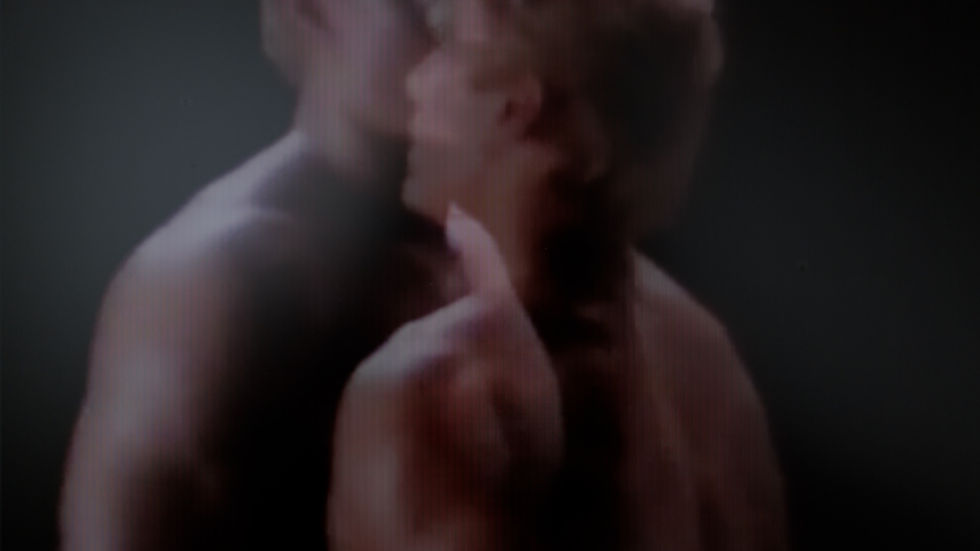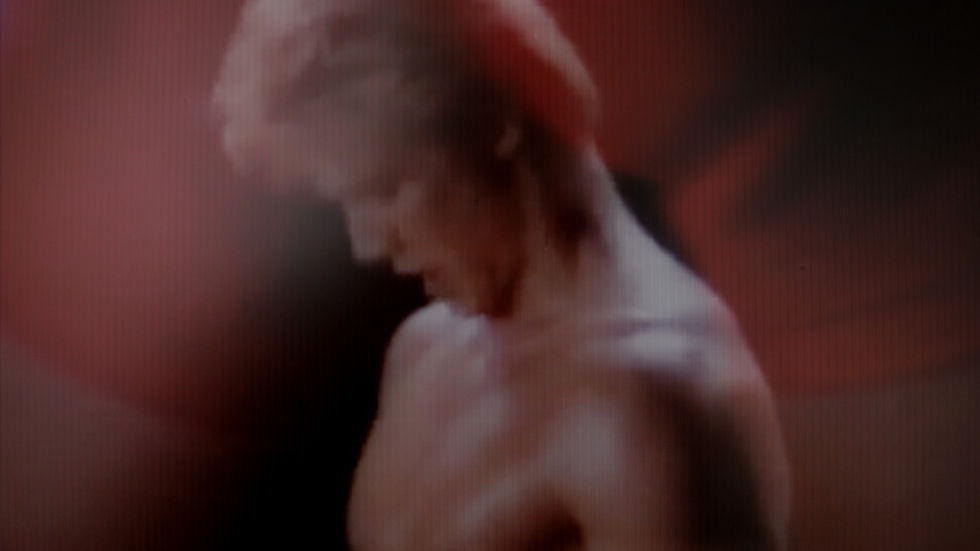Dual Perspectives: Matthew Bamber and Dominic James Bilton Interview Each Other
- Matthew Bamber and Dominic James Bilton
- Jul 4, 2023
- 5 min read
Artist, Matthew Bamber and Curator, Dominic James Bilton sit down to discuss queerness in art and the dynamics of Queer curating.

Matthew Bamber 'Subtle Slights' 2022. HD Video stills, 10 min 53 sec (single-channel).
Dominic: For those that might not be aware of your work, which comes in many different mediums such as film, installation, print, and collage to name a few but where we as a viewer can trace a pattern of influence - if you were to describe your influences that inform your practice, what would you say that these are?
Matthew: My work confronts themes, including violence, greed, and shame, through the physical and digital combination and manipulation of images. I'm influenced by the language of the Baroque. This has manifested itself continuously as a way of pictorially constructing the images I make, but also as a way of dealing with a lot of information in just a singular image. I think the Baroque is a very relevant filter to see through, in a world that seems to be in a continuous state of turmoil.

Matthew Bamber 'Subtle Slights' 2022. HD Video stills, 10 min 53 sec (single-channel).
Found and personal imagery is the foundation of a lot of my work. Our world is saturated by media spectacle and my practice intends to slow down this 'click drift' approach to images in order to reframe them. There are a lot of images out there that to me are a deliberate veil to something much more powerful and horrific. In our current world, history now comes to us through the images we consume, so the internet makes for very rich pickings.
Recently I have been using video and approaching it like I would a collage piece. The singularity the screen offers seems to make sense with what I do, which is often very fragmented and packed with ideas. My video ‘Subtle Slights’, which I'm so thrilled that you included in your ‘(Un) Defining Queer’ exhibition, is a really good example of this.
There are some amazing pieces in the show, from textiles to wallpaper. Has your initial idea of Queer art changed through curating exhibitions, and queering institutional archives? Is there such a thing as a Queer medium?
Dominic: My idea of what Queer art is hasn't changed, but it certainly has developed over the period of researching for ‘(Un)Defining Queer’. For example, at the start of this project, I was aware of about 10 Queer artists that the Whitworth had within its collection. But by the time the exhibition opened, we had queered over 700 artworks across lots of different mediums, which now included hundreds of artists spanning hundreds of years.
I also think that if a Queer person sees something that they connect with in a piece of art, then for me that work is Queer to them. So, I think my idea of what Queer art can be has developed through this process. The ‘(Un)Defining Queer’ exhibition is a good example of this process. We worked with a community group of 15-20 participants whom each chose 1 or 2 artworks to go into the exhibition. These artworks were queered by them. Some of these works were Renaissance prints that depicted a story from the Bible, whilst another participant picked the wolf from the Little Red Riding Hood fairy tale, which they related to their own non-binary identity. So, this idea of what Queer art is or can be is definitely something that is down to the individual who is looking at an artwork.

Walter Crane, Proof of illustration from 'Little Red Riding Hood' Picture Book, 1898. Image courtesy of Michael Pollard.
And this relates to the question: Is there such a thing as a Queer medium? Taking a theoretical approach to the question, Judith Butler writes about Queer as being something that troubles and confronts, shifts and changes, and I like the idea that Queer art 'troubles' things. So, any medium that troubles the dominance of heteronormativity can and should be a Queer medium. I like the idea that a straight artist can 'Queer' something without it having anything to do with their own gender or sexual identity.
Should Queer art always be about sexuality or gender within visual art? As a visual artist yourself, it would be interesting to hear about what you think Queer art is?
Matthew: I'm really drawn to Walter Crane’s ‘Little Red Riding Hood’ piece. The wolf looks so full of confidence wearing the grandmother's hat, admiring their reflection in the mirror, it really radiates excitement and danger.
For me, Queer art is about how artists dismantle existing communication codes and reorder some of their elements into structures which can be used to generate artworks. It's about offering an alternative perspective on the world, one that is different to the dominant narratives constructed by the heterosexual. For me, the way that queerness seems to constantly reject being defined is in itself an interesting idea, because isn't this part of what makes great art?

Walter Crane, Proof of illustration from 'Little Red Riding Hood' Picture Book, 1898. Image courtesy of Michael Pollard.
Dominic: It is a really interesting question to ask or put out into the ether about what does or doesn't make something a great piece of art, and specifically a great piece of Queer art. Like you have said, great art is about rejecting how to define it, just like people who identify as Queer, about a rejection of having a defined definition of which to describe themselves.
I think a great piece of Queer art that does what you have mentioned, that rejects definition, and which is possibly one of my favourite works in the exhibition is ‘The Coral Divers’ by Charles Shannon and Charles Rickets. This work was not intended to be given the reading that it is now being given in ‘(Un)Defining Queer’, but as society becomes more liberal and people become more confident with being non-binary and/or Trans (although we are a long way from where we need to be with regards to Trans rights) the works are about gender fluidity and tenderness and caring and love. The work is possibly one of the smallest in the exhibition too.

Charles Haslewood Shannon 'The Coral Divers (from 'ldyls of Rural Life, 1898). lmage courtesy of Michael Pollard.
With regards to great Queer artists or artworks, I know that the word 'great' is very subjective, who are or were your inspirations? Which artwork are you most drawn to in the ‘(Un)Defining Queer’ exhibition and why?
Matthew: It just so happens that I'm currently developing an artwork called ‘Crystal Coffin’, inspired by the Shannon and Ricketts personal archive, which now resides at The Fitzwilliam Museum. It is part of a much larger body of work exploring ideas around Queer domesticity and the Aestheticism movement, I am really looking forward to showing this new work.

Matthew Bamber 'Crystal Coffin' 2023. Courtesy of the Artist.
I have so many influences. I am loving Cindy Sherman's new self-portraits that deconstruct and fracture her face. I am also a bit obsessed with Alex Da Corte. I was in Berlin the other weekend to attend a show I was in, and whilst I was there, I got to see Emily Wardill's video installation ‘Identical’ at KW Institute for Contemporary Art – it was such an amazing experience to see it.
In answer to your question about what work I am drawn to in the exhibition, I would have to say the ‘Tunic for Knight, L'Oiseau de Feu’ by Alexander Golovin for the Ballets Russes. I was shocked to discover it dates back to the early 20th century. Its beautifully hand-painted decoration looks like it could have been made today. I love its connection to theatre and set design, which is steeped in Queer history. Ultimately, it was the piece that made me pay close attention to the ideas around what the exhibition is exploring.
‘Un(Defining) Queer’ is available to view at The Whitworth in Manchester until 3rd December 2023.




Comments